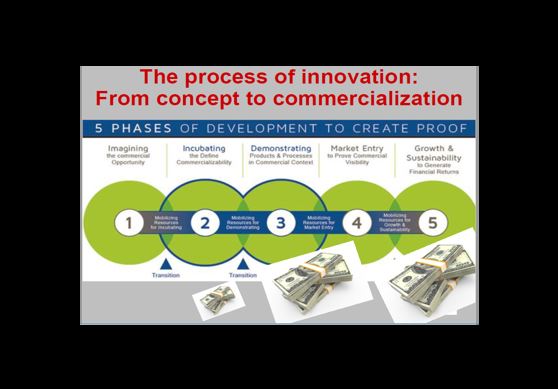Despite decades of shared knowledge about how to shape winning strategies and achieve results, a stunning 90 percent of businesses still fail to implement strategic goals.
Research indicates an average of 95 percent of employees are not engaged with their organization’s strategic plan. That is, they don’t understand their organization’s direction, and lack the emotional commitment needed to achieve strategic goals[1]. Furthermore, 85 percent of executive teams spend less than one hour per month discussing the strategic plan, and more than half spend no time at all[2].
These dreary facts present a longstanding leadership challenge and opportunity for 2022: Strategy development is not enough.
The principles of “Vital, Visual and Visible” communication provide a helpful framework to support strategic planning. The following “3Vs” have potential to improve employee engagement in strategy execution.
Vital is the first communication principle, defined as essential and meaningful. When an organization’s strategic planning process is valued and indispensable to the organization’s future, strategy meetings are viewed as vital. Then, the resulting strategic plan is highly regarded as a life-giving roadmap to the future – a plan worthy of implementation – not a shelf ornament.
Creating a vital strategy process and strategic plan begins with an organization’s CEO and leadership team. The CEO is the chief strategy ambassador responsible for creating excitement about the process and gravitas for the resulting plan. The chief communication officer should be included from the start, charged with playing pivotal role in shaping strategic plan messaging and outreach to internal and external audiences.
Visual is the second communication principle, defined as including illustrations and picture elements.
Visuals can transform lengthy, boring written strategic plans into inspiring stories of an organization’s future with tools such as a digitized, magazine-style online document featuring infographics, diagrams, animated graphics, photography, and video.
Visible is the third communication principle, defined as being easily seen. For the strategic plan to be understood, it must be visible – conspicuously communicated and embodied throughout the organization – not hidden.
Effective tools for boosting strategic plan visibility include employee strategy updates hosted by the CEO and senior management team, held either in-person or virtually.
Strategy forums or rallies provide an excellent platform for direct dialogues and reciprocal exchanges where employees’ views are invited. Best yet, strategy forums create opportunities for leadership role modeling, with the expectation that managers will continue strategic goal dialogues across the organization at department and work-team levels.
To build exceptional visibility for key elements of your strategic plan, use your organization’s website as the premier tool for strategic plan communication.
Only a handful of global Fortune 500 companies use corporate websites to promote strategic plans and initiatives. This is a missed opportunity. Your organization’s website is the most powerful global marketing and communication tool available to your organization, working 24 hours a day as a strategic information resource.
Daimler is a global company demonstrating unparalleled commitment to effective “3V” strategic plan communication.
- Vital: Ola Källenius, Chairman of the Board of Management for Daimler AG and Chairman of the Board of Management of Mercedes-Benz AG, provides high-profile ambassadorship for Daimler’s strategic plan. He regularly hosts virtual strategy rallies to share strategic plan progress reports with employees and investors across the globe.
- Visual: Daimler’s communication department produces spectacular videos and animated illustrations to bring key strategies to life, such as the company’s ambitious electric vehicle strategy.
- Visible: Daimler’s website is a premier global communication vehicle, featuring the recorded employee strategy rallies for external audiences, as well as vision and strategy videos and documents.
Don’t just develop a strategic plan – purposefully communicate it! Vital, Visible and Visual strategic plan communication can help your organization improve employee engagement in achieving strategic goals, resulting in external stakeholder value.
Carol A. Poore, Ph.D., MBA, is president of Poore & Associates Strategic Planning, is author of Strategic Impact: A Leader’s Three-Step Framework for the Customized Vital Strategic Plan, and is a faculty member at Arizona State University’s School of Public Affairs.
Strategic planning is a continuous process that draws together an organization’s leadership team to envision a future, develop a strategy to achieve that future.
The strategic management process involves five groups of interconnected activities[3]. First, leaders formulate a strategy or make adjustments to existing strategy to create a unique mix of value for all stakeholders, including owners, customers, partners, and employees as differentiated from competitors. This includes analyzing the external and interna environments, formulating and analyzing a set of strategy alternatives, and choosing the most suitable and feasible strategy.
Second, leaders implement strategy by shaping goals and action plans. They align the operating model to support the strategy. Third, leaders foster strategy engagement by explaining the strategy, inviting feedback, and removing barriers. This forges employee commitment.
Fourth, leaders provide strategy governance – strategy direction and control – to deploy resources, monitor performance, and make course corrections when needed, leading to strategy execution as the fifth step.
[1] Kruse, Kevin (2012). What is Employee Engagement? Forbes, Jun 22, 2012.
[2] Kaplan, Robert S. and Norton, David P. (2005). The Office of Strategy Management. Harvard Business Review, October, 2005.
[3] Hadaya, Pierre (2021). Making the Promise of Strategy A Reality With the Enterprise Architecture Approach. Strategic Impact Friday, September 10, 2021.




